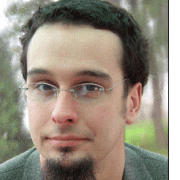The New Human and the New Humanity: Homo Amor
This early draft of an essay was written by Dr. Marc Gafni. It is part of Volume 2 of a forthcoming six-volume book series, The Universe: A Love Story, by Dr. Marc Gafni with Dr. Zachary Stein & Barbara Marx Hubbard. The essay was edited and prepared for publication by Kerstin Tuschik. We welcome substantive feedback as we prepare a more advanced version of this essay.
As we begin to live the new Story of Value, a New Human and a New Humanity begin to emerge. We have called the New Human and the New Humanity by the term Homo amor. Homo amor is the fulfillment of Homo sapiens. The shift to this new consciousness is fundamental. It is in many ways parallel to, and as momentous as, the early evolutionary transition from single-celled to multicellular life.
As the consciousness of Homo amor becomes available, more and more lives will be not only a love story but also a triumphant love story. Indeed, we are convinced that telling the new Story—articulating the new narrative of Homo amor, the Intimate Universe, and the Universe: A Love Story—is the most potent response to suffering that we have at this moment in our history.
Just as the new story of modernity generated innovations in exteriors that birthed the great dignities of modernity, it is the new Story of Homo amor that—at this pivotal eleventh-hour moment in the short span of human history—needs to generate innovation in interiors. This, in turn, will generate the coherence necessary to transform mass tragedy and devolution into mass triumph and evolution.
The Trajectory of Evolution: Promise and Peril
This view is not pollyannaish in any sense of the term. It in no way ignores evil or suffering. Quite the contrary.
First, it needs to be stated clearly that evolution is not a direct linear progression toward ever-deeper love and intimacy. Evolution meanders.
And yet, second, evolution does progress. Evolution is the movement toward Love by Love’s own inexorable and incessant persuasions: Persuasions that are both gentle and fierce in their quality and character.
A Note on Desire
Alfred North Whitehead was not wrong when, echoing the leading edges of the interior sciences in Hebrew wisdom, he pointed toward the inherent purpose of evolution as the movement toward the Good, the True, and the Beautiful. Or, stated somewhat differently, if we are to deploy the term that we pointed towards above—the term appetite that Whitehead chose—Reality is hungry. Reality is hungry for the Good, the True, and the Beautiful, all of which are expressions of a more primal hunger, the hunger for more Love, for more Eros, for more Divinity, disclosed in human form. Reality is lined with appetite all the way down and all the way up the evolutionary chain. In the language of CosmoErotic Humanism, the appetite of Cosmos is the Eros of evolution that itself evolves.[1] [i] What Whitehead calls appetite, the interior science call by many other names including teshuka—desire.[2] Reality desires. (more…)


 Abstract: Foreshadowing arguments from the forthcoming book, Towards a New Politics of Evolutionary Love, this paper suggests that humanity is in the throes of a species wide identity crisis, precipitated by a broadening awareness of our impending self-inflicted extinction. This growing awareness that humanity is responsible for its own fate and the fate of the planet is referred to as the second shock of existence. The second shock has spawned a great deal of discussion about the need for revolutions in technological, economic, and ecological infrastructures, yet this focus on exteriors addresses only half the picture. Comparable revolutions of our interiors must also take place—radical transformations in the very structure of our consciousness and species-wide self-understanding. This is a call for attending to the interior dimensions of the current global crises, recommending in the strongest possible terms that tremendous energy and resources be rechanneled into planning for the vast educational reconfigurations facing humanity in the coming decades.
Abstract: Foreshadowing arguments from the forthcoming book, Towards a New Politics of Evolutionary Love, this paper suggests that humanity is in the throes of a species wide identity crisis, precipitated by a broadening awareness of our impending self-inflicted extinction. This growing awareness that humanity is responsible for its own fate and the fate of the planet is referred to as the second shock of existence. The second shock has spawned a great deal of discussion about the need for revolutions in technological, economic, and ecological infrastructures, yet this focus on exteriors addresses only half the picture. Comparable revolutions of our interiors must also take place—radical transformations in the very structure of our consciousness and species-wide self-understanding. This is a call for attending to the interior dimensions of the current global crises, recommending in the strongest possible terms that tremendous energy and resources be rechanneled into planning for the vast educational reconfigurations facing humanity in the coming decades.